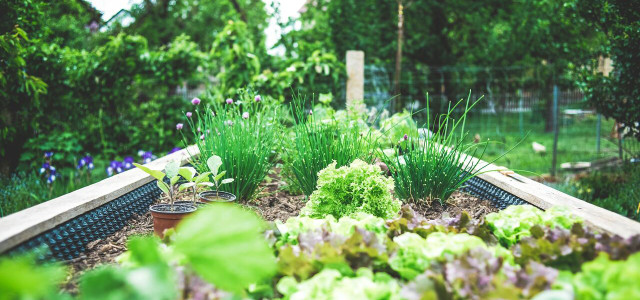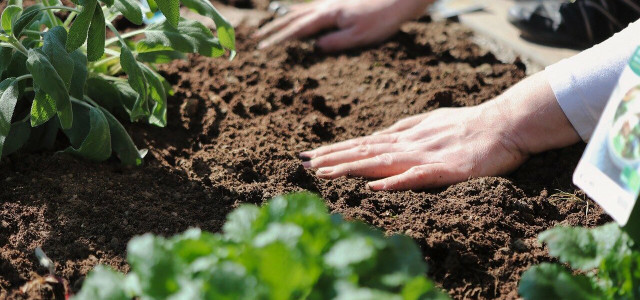No dig gardening has become popular with many — and for a good reason. If you want a less strenuous gardening routine, it may be perfect for you.
The no dig gardening method dates all the way back to the 1900s, when the first book on the topic was published by Masanobu Fukuoka in 1938. Its legacy continues to this day, with the well-known gardener Charles Dowding contributing to its rise in popularity. However, just what does this term stand for exactly? Let’s take a look.
The term ‘no dig’ refers to a technique that quite literally involves minimal to no digging, with many individuals viewing it as a less strenuous but effective way of gardening. Unlike traditional gardening methods, no dig instead uses organic matter to naturally eliminate weeds. Many people use the gardening method to grow organic vegetables.
No Dig Gardening: Some Definitions
To understand the point of no dig gardening and its unique benefits, you’ll need to know about some gardening terms first.
- Organic matter, or organic material, is any carbon-based compound found in terrestrial and aquatic environments. Some examples of organic matter used in no dig gardening include leaves that have broken down into leafmould, grass clippings, and even paper or cardboard. You can also use well-rotted manure and compost.
- Mulch is essentially any material that is spread on the surface of the soil in order to kill weeds or promote plant growth. The organic matter used in no dig gardening serves as mulch.
- Compost is a rather broad term that refers to any decayed organic matter used as plant fertilizer and to improve soil. In short, compost is what you get when organic material decomposes properly. In no dig gardening, compost is a type of organic matter used as mulch.
Is No Dig Gardening Eco-Friendly?
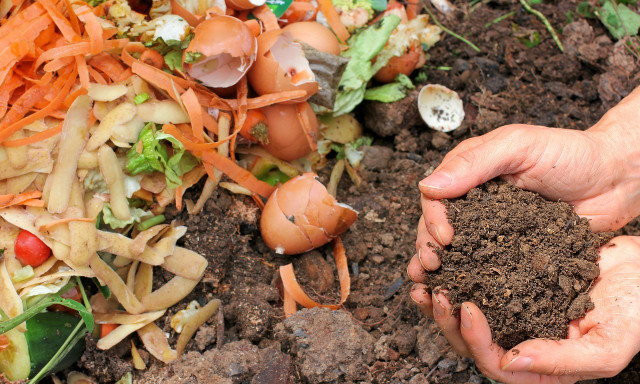
(Foto: CC0 / Pixabay / melGreenFR)
No dig gardening offers many great benefits. Not only does it require less effort, but it also helps enhance the decomposition process. So, how does it work exactly?
In simple terms, no dig gardening consists of adding layers of organic matter, such as garden compost, over the top of your soil. According to the advocates of no dig, “leaving it be” allows the soil to function at its best:
- Organisms that live in the soil, like earthworms, aren’t bothered or killed and do their part in keeping the balance of the ecosystem in the soil.
- Mulching helps reduce weeds — simply because they don’t have enough space and sunlight to grow under the thick lay of mulch.
- Adding compost onto your garden bed helps preserve water and prevent soil erosion, which can both be useful to prevent flooding.
- All this keep the soil healthy, which in turn helps support plant growth.
In addition, soil contains a lot of carbon. So not digging in it means releasing less carbon into the atmosphere — which is great news for the environment. Some argue that commercial scale no dig farming could, by sequestering CO2 from the air and locking it in the soil, even help mitigate the effects of the climate catastrophe.
Read more: 10 Surprising Benefits of Composting
Speaking to Country Living, a UK blog about slow living, English horticulturist Charles Dowding also explains that “you need less fertilizers, less pesticides, very few slug pellets.” Synthetic fertilizers and pesticides pose a threat to both our environment and wildlife, as they can get washed down waterways and contaminate the surrounding environment.
Types of No Dig Gardens
A no dig garden can be structured different ways, depending on your preferences and goals. The common types include:
- Raised bed gardens — Raised beds aren’t exclusively used in no dig gardening, but they are perfect for it! Simply put: The bed is raised to a height where you can comfortably work the soil without having to crouch or bend over. You can build them small enough so you’re able to reach everywhere and you’ll never have to step on the mulch. Raised beds also make no dig gardening even more accessible and back-friendly. Many people use wooden crates to build the raised bed, but buckets or old tires will do just as well.
- Lasagna gardens — They are called that because they contain alternating layers of green and brown matter. The top layer should be soil.
- Hugelkultur — German for “hill mound”, this type of bed uses rotting wood and other garden debris to create a raised bed out of materials you already have around your garden.
- Straw bale beds — when you plant your seedling directly into bales of straw. As the straw decomposes over the summer, it provides the plants with valuable nutrition.
- Container gardens — these are perfect for urban gardening, or even planting in an apartment. Tomatoes and basil, for example, are very suited for container gardening. But even hot peppers count as some of the easiest vegetables to grow at home — once you know how!
No Dig Gardening Step-by-Step
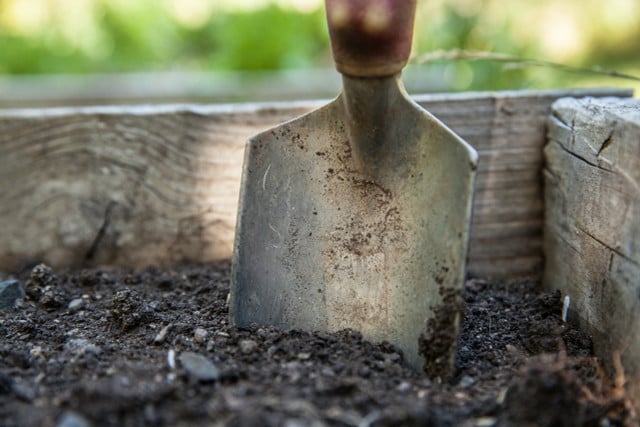


(Foto: CC0 / Pixabay / walkersalmanac)
A no dig garden consists of two main layers: your cardboard layer and your organic material layer.
- Find a space for your no dig bed: For beginners a small 4 by 8 feet bed is recommended; You can start the bed on unused grass areas, or use a raised bed for easier access. If you’re growing veggies, keep some distance to tall trees and hedges as they suck a lot of moisture from the soil and tend to attract pests, like slugs.
- Cut down any long weeds and lay down a light-excluding lay or mulch — cardboard works! There should be no gaps in between.
- Now layer on your organic layer. It should be around 10 to 15 centimeters thick and cover all of the cardboard. To avoid wasting mulch and allow proper drainage, never put too much mulch on your no dig garden. Instead, start with a smaller amount and build-up if necessary.
- Optional: use wooden sides to keep the compost in place. You can also use temporary sides to keep the compost in place for the first few months.
- Be sure to mulch the area that surrounds the bed, as otherwise it’ll be overgrown by weeds very soon.
Why the two layers? Sticking to this two-layered structure is essential as the cardboard helps to kill any weeds that could otherwise steal nutrients, water, and light from your plants, thus compromising their growth. Your organic layer is equally important, as it helps to create nutrient-rich soil for your plants and prevent weeds from growing back. Each of these factors will help your no dig garden to thrive.
To always have enough compost ready for your no dig garden, check out our other guides on the topic:
- How Does Composting Work? A Step-By-Step Guide
- Composting Grass Clippings: Put Garden Waste to Use
- Cold Composting 101
- 3 Ways to Compost Leaves
- Can You Dispose of Wood Ash in the Compost?
- Can You Compost Bread?
- Composting Meat: How to Dispose of Meat Scraps
- What You Can Compost, What You Can’t — and Why
Downsides of No Dig
If executed properly, the no dig method can be beneficial for the soil and the organisms in it, the climate, your back, and it can produce bigger harvests through less work.
However, no dig does come with downsides.
- For one, you will need a lot of organic matter for this technique, which some people may see as a downside, either because of the cost or not having access to it. If it’s your first time trying no dig, then you may require even more.
- It may also be challenging to scale up or down, and it will take a lot of time to establish.
- No dig gardens usually require you to top off with new soil significantly more often than other gardens.
- They are fixed in place and while it’s possible, they are very hard to move.
- Things are rarely as easy as they seem. No dig gardening can be really ineffective if you get some steps wrong. Each type of no dig garden must be constructed a specific way, otherwise your veggies or flowers might just not grow.
What Climate Is Best for No Dig Gardening?
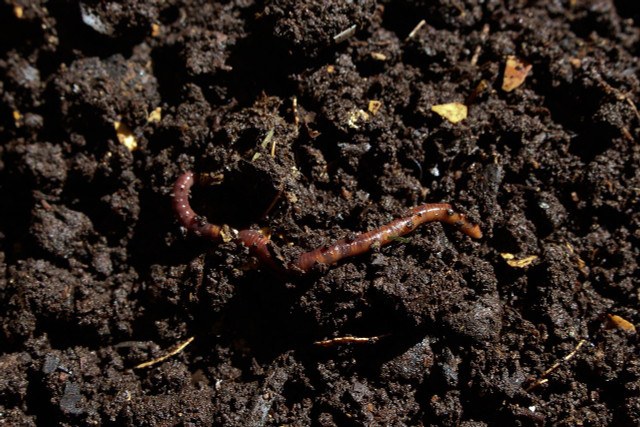


(Foto: CC0 / Pixabay / Chesna)
Thankfully, the no dig method can be implemented in any climate without limitations. The same goes for soil types; no dig should work with most types. So, no matter whether you live in a hot, cold, or more neutral climate, anyone can benefit from using the method. However, your climate may affect what plants you can use, so do your research before you begin the process.
However, you should consider that when deploying this method, you will have to be patient. To reap the full benefits, you may have to wait anywhere from a few months up to a year, so patience and prepping is key.
You should consider the size of your garden, your resources, and how you’re going to navigate around the area. Most people establish paths for large areas of no dig gardening.
When making a decision about whether to begin a no dig garden, make sure to weigh up the pros and cons and envision how the method would work for you and your garden. If it seems beneficial, then you can start as soon as possible.
Read more:
- How to Add Nitrogen to Soil: 8 Cheap & Easy Methods
- Are You Still Wasting Time Peeling Carrots? Then Here’s Good News
- Do Carbon Offsetting Programs Actually Work?
Do you like this post?






